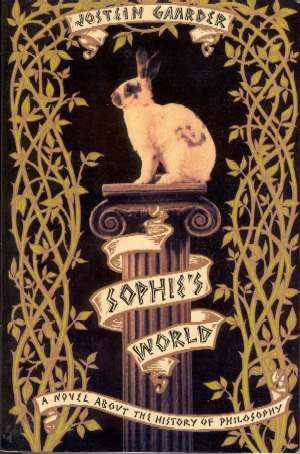Finished reading an interesting way to teach Philosophy to anyone, including kids, though some of it may be over their heads (mine too!). Sophie’s World by Jostein Gaardner is the story of a 14-year-old, Sophie Amundsen, who is growing up in Norway. Sophie resides with her mom while her father, an oil tank captain, is away at work. Think about a 14-year-old child receiving anonymous letters from someone… to join a correspondence course on philosophy! She is intrigued and decides to sign-up under the tutelage of Dr. Alberto Knox, who delivers to her the history of philosophy from the Greeks (Socrates, Plato, Aristophanes) to Sartre. She also gets a postcard from Albert Knag, a major in the UN doing peacekeeping work from Lebanon, who was sending a note to his daughter Hilde. She does all of this and withholds the info from her mom, who begins to think Sophie is on the verge of craziness or using drugs. Sophie learns about the thinking from the modern mind and then world’s collide… Albert Knag is teaching the world of the mind to his daughter at the same time and Sophie’s life serves as a teaching for Hilde, and vice versa. So are we in Sophie’s story or Hilde’s story or both? Does Sophie’s world serve a learning purpose for Hilde or vice versa? Confused yet? While using the devise of a child’s book to teach the student about the intricacies of thinking may be much, I liked the story mechanics, albeit the philosophy piece was cute, not so entertaining for me. Then through Sophie’s visit to Alberto’s place (which she finds by chasing his dog, who started delivering the letters to her house so she didn’t discover him), she sees into mirrors visions of a young girl winking at her (Hilde) and later characters from the beloved children stories. Wacky, yeah it gets pretty far-fetched after a while. I felt I was back on the set of one of my favorite plays, Rhinoceros. If the author had stuck with the initial story pattern, probably would have been more enjoyable for me. The psychotic overtones didn’t work for me. It actually could have ended like St. Elsewhere (TV show) which ended the series with a kid looking into a “snow globe,” ie the characters were all in his imagination. Overall, a cute concept, good learning for young folks on philosophy and the questions of life, but no, not as interesting as it started. I’d take a pass on this one!

No comments:
Post a Comment